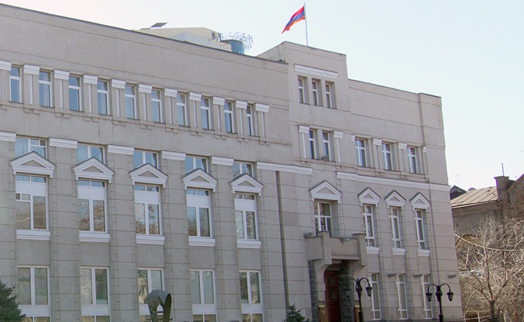YEREVAN, April 16. /ARKA/. The Central Bank of Armenia is in the operational management mode now and is analyzing scenarios of the development of the situation related to the coronavirus in order to be as ready as possible for any events, Martin Galstyan, a member of the central bank’s board, said Thursday speaking at the National Assembly as a candidate for central bank chairman. Martin Galstyan is My Step faction’s nominee.
“The actions of the central bank in the context of the spread of coronavirus in Armenia were in conformity with the current situation and predetermine all possible scenarios for its development,” Galstyan said.
In his words, yet in early March, the central bank considered possible processes at its meetings with the heads of commercial banks in connection with a possible deterioration in the financial situation of borrowers.
In accordance with the agreement reached, the central bank slightly eased the regulatory regime of financial institutions, and also extended the repayment term of loans under international programs and mortgage lending for six months. Banks and credit organizations were given the opportunity to revise the conditions for granting loans to individuals and legal entities (repayment terms, interest rates, currency) so that in the current situation loan payments did not affect the credit history of borrowers.
“In fact, the system was one of the first to operate without state support, which played a role in mitigating the effects of the crisis,” he said.
Galstyan recalled that on March 17, the central bank’s board decided to lower the refinancing rate.
“At first glance, it seems quite normal, but in the current situation this is a non-conservative step. Many partners in the region, who faced the pressure of the devaluation of national currencies, did not go this way: the Bank of Russia did not lower interest rates, and the Central Bank of Kazakhstan even had to raise them,” he said.
The member of the regulator’s board pointed out the preservation of stability in the market as the third important step, noting that the central bank provided the system with the necessary amount of liquidity in both national and foreign currencies.
“At the moment, the system has no problems with liquidity, and the markets are operating at a normal pace,” he said.
In his words, the issue of adjusting the area of banking activity regulation is also being discussed, in particular, the possibility of reducing the capital adequacy ratio by 1 percentage point, as well as the possibility of extending the liquidity ratios until January 1, 2021.
“It should also be noted that the Central Bank is working with banks and credit organizations in the mode of daily operational contacts, recruiting personnel as soon as possible and solving the current situation,” Galstyan said.
According to him, the regulator’s attention is focused on the implementation of the package of government programs.
The central bank’s “hot line” is operating in an overloaded mode, and attempts are being made to provide comprehensive answers to questions that concern citizens. In the case of many issues, the central bank plays the role of a bridge in the relations between the lender and the borrower,” he said.
A state of emergency in order to suppress the spread of the coronavirus operates in Armenia from March 16 to April 14. Restrictions on free movement and certain types of economic activity in Armenia in a state of emergency (previously imposed for the period from March 24 to March 31) were extended until April 12 inclusive. On April 11, it became known that the Armenian authorities extended the state of emergency for another 30 days – until 17:00 May 14, 2020 inclusive.
According to the health ministry’s latest report, there were 1,159 confirmed COVID 19 cases, 358 recovered patients and 18 deaths in Armenia as of April 15. -0—








